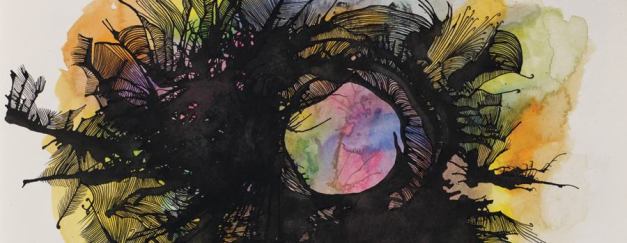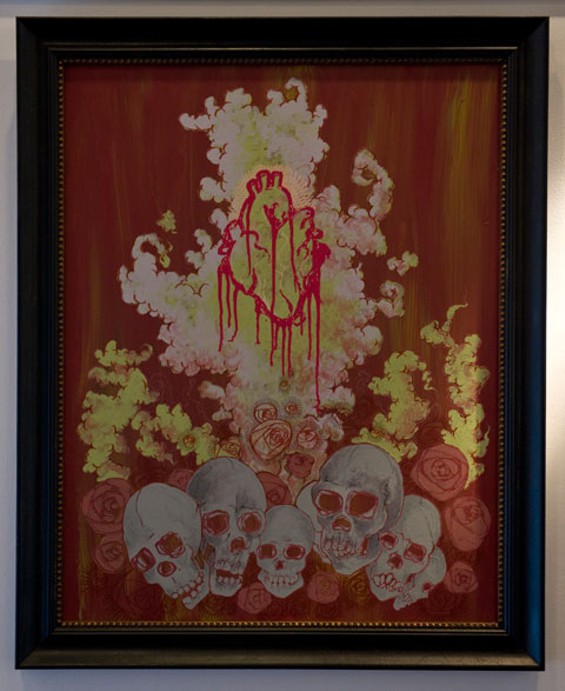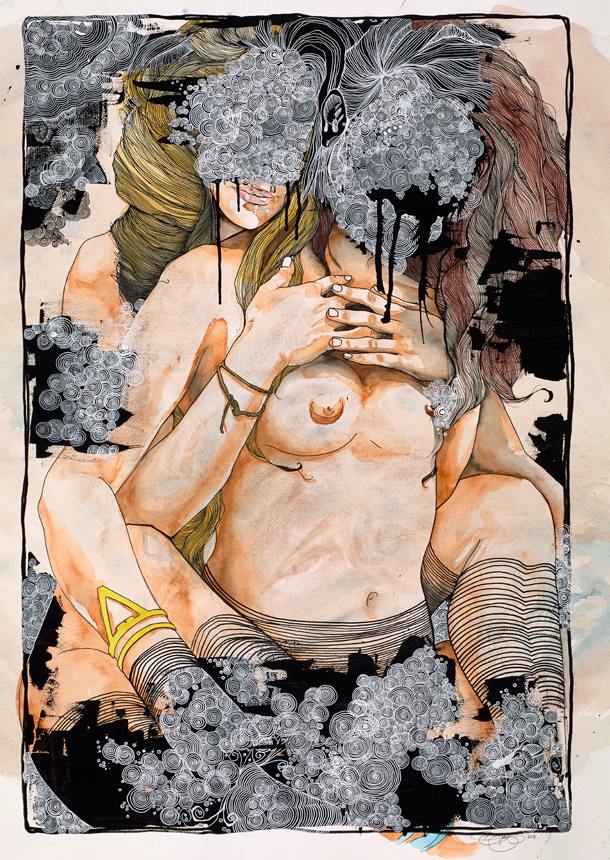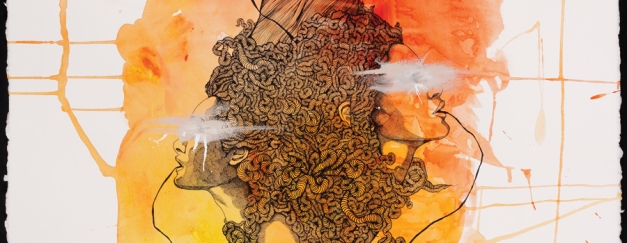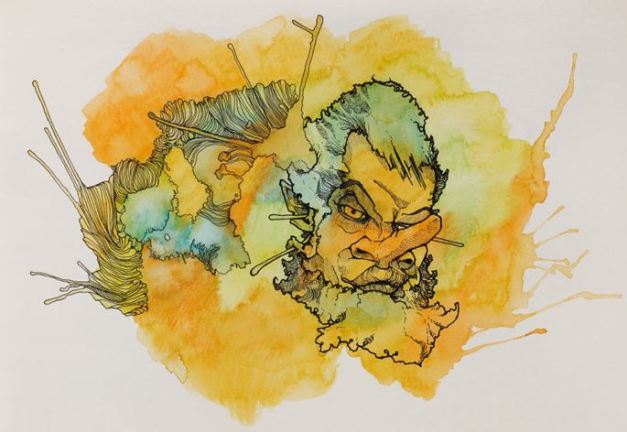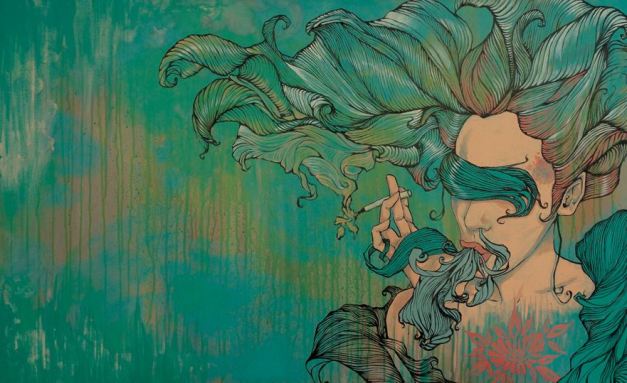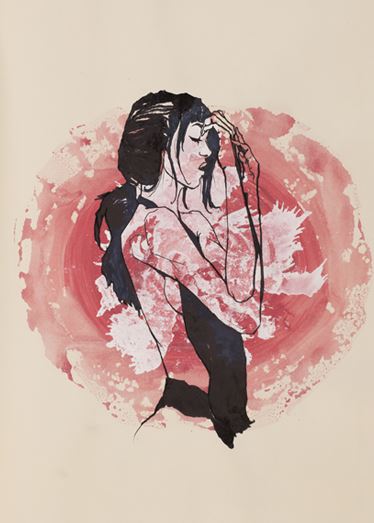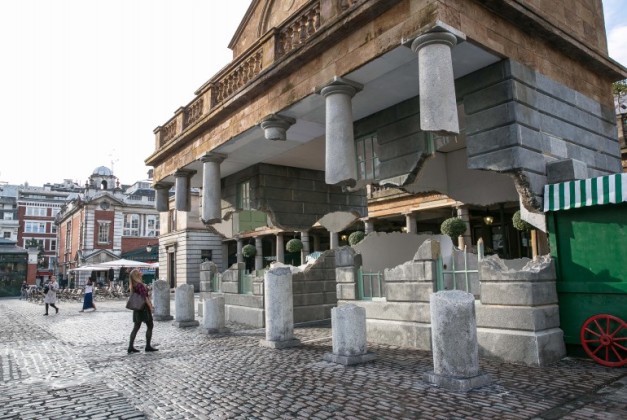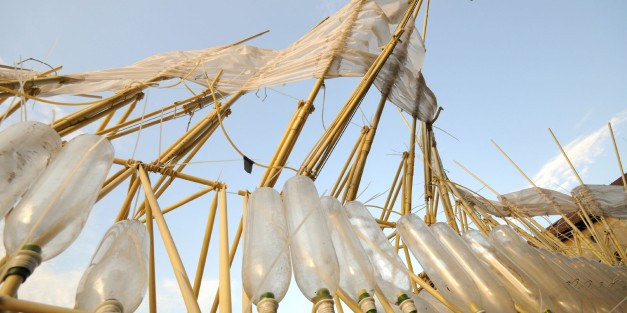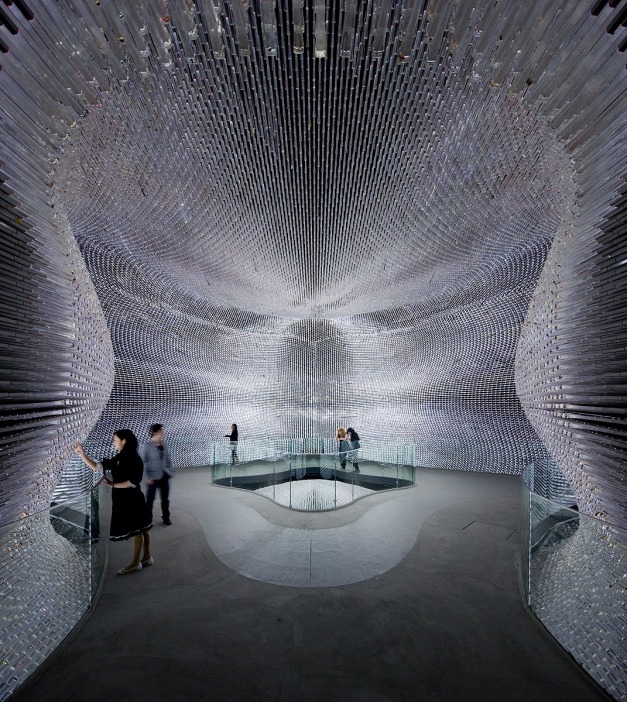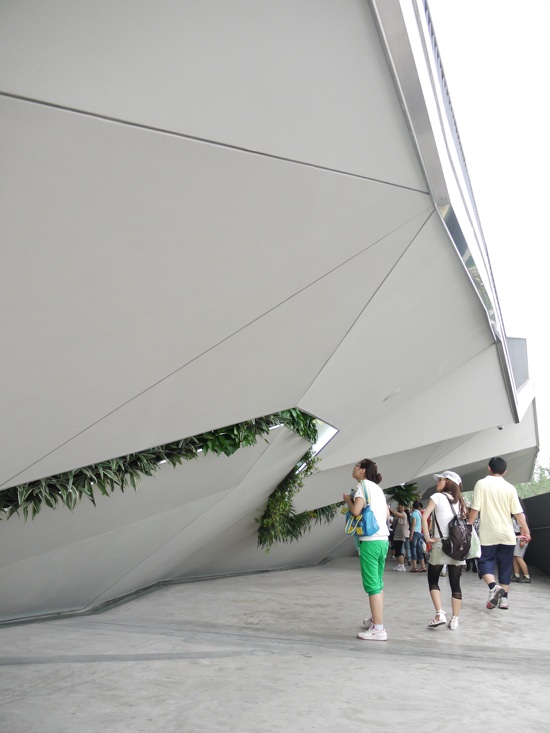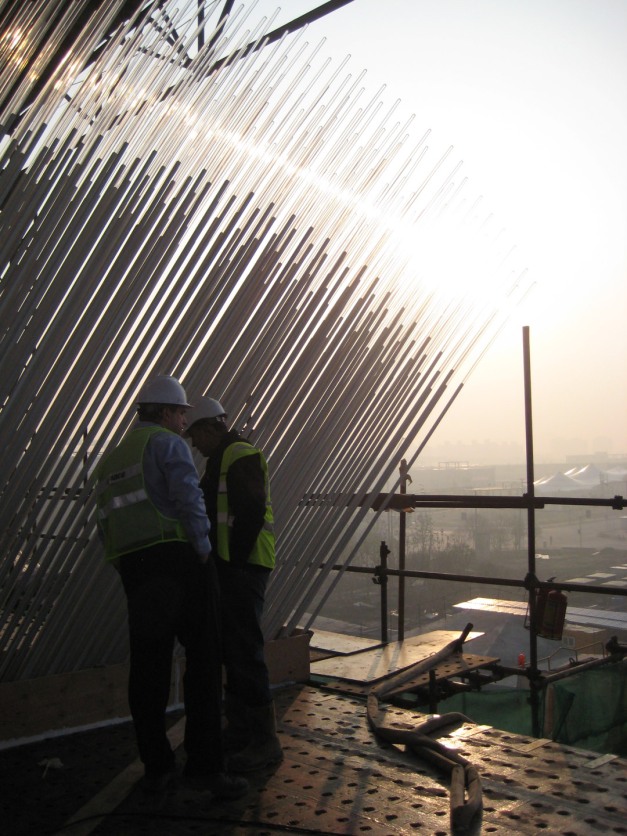Berndnaut Smilde (b.1978, Groningen, Netherlands) lives and works in Amsterdam. He produces striking images of ‘real’ clouds suspended within empty rooms. Using a fog machine, he carefully adjusts the temperature and humidity to produce clouds just long enough to be photographed.
It usually takes the artist a few days to set up, or “acclimatise” a space, before a photo shoot. There’s a breathtaking second when a cloud hangs together daintily, resembling a floating mixture of white vapor and mist that you might pass near a damp mountaintop, before it begins to break up and look like a stage set again. Though Smilde’s creations are all types of cumulus clouds, the denser ones tend to hang around the longest.
Last year Smilde banned audiences from watching him create his cloud works after receiving an angry letter from a member of the public in Kentucky. “I think she was expecting a spiritual experience,” he says. “A lot of people think a high-tech process is involved. But I work with anything just to create this idea.” His toolbox has been assembled to manipulate levels of smoke, water, wind, convection currents and light.
Smilde is interested in the temporal nature of construction and deconstruction. His works question: inside and outside, temporality, size, the function of materials and architectural elements.
The Van Gogh-Roosegaarde cycle path was opened at Eindhoven on 12 November.
The opening of this unique cycle path marks the start of the Van Gogh 2015 international theme year. The cycle path is inspired by Vincent van Gogh’s work and it combines innovation and design with cultural heritage and tourism. The Van Gogh - Roosegaarde cycle path was constructed by Heijmans from a design by Daan Roosegaarde and forms part of the Van Gogh cycle route in Brabant.
After dark visitors are amazed by a design of light and colour, inspired by the world-famous painting The Starry Night by Vincent van Gogh. Together with the artist Daan Roosegaarde, Heijmans developed special innovative technology with which the path is illuminated by thousands of twinkling stones. This creates a play on light and poetry.
Brandon Boyd is pleased to present his latest artworks at Rossmut Gallery on Thursday, October 30th, in Rome.
As written by curator Loretta Di Tuccio in the critical text that accompanies the exhibition, in the series of works on paper, wich premiere in Italy, the precise line of Boyd proceeds to search for a correlation between the human identity and the elements that surround it. Alternating the abstract and the reality, his figures emerge from labyrinths where the sign, as in a topographic work, outlines hypothetical landscapes drawing a human geography.
In Boyd’s works the origin is the nature, which is the source generating repeatable and pure forms in that ambiguous and infinite theme that is the identity.
During the Preview, Brandon Boyd will sign copies of his latest book ‘So the echo’ presented for the first time in Italy.
Biography:
Brandon Boyd was born in 1976 in Calabasas, California. In 1991 he began singing and writing song lyrics for what become an internationally recognized rock band, Incubus. The band is currently in the studio with plans to release new music and tour in 2015. In parallel to the music Boyd is interested in art since he was young and has published three books containing works, photographs and texts he has written: "White Fluffy Clouds" 2003, "From the Murks of the Sultry Abyss" 2007, and "So the Echo”, in 2013, when also recorded his second solo album, 'Sons of the Sea". His works have been exhibited in numerous solo and group exhibitions and he has also created several partnerships with various brands like TOMS Shoes and Hurley for which he created a mural at their Space Gallery; some parts of the mural have been exposed at Los Angeles County Museum of Art, The Museum of Monterey (CA) and in Cape Town, South Africa. The first exhibition of his works in Europe took place last March in Zurich at Grafik 14, with book signings also in Paris and London.
A piece of the historic Covent Garden market appears to have broken free of its stone base, with its top half levitating in the air, in the latest installation by London designer Alex Chinneck.
Take My Lightning but Don't Steal My Thunder by Alex Chinneck is a precise replica of a section of the 184-year-old market building in London's Covent Garden that has been made to look as if its upper portion has broken away from its stone base to float in mid air.
Built from a steel frame and filcor, a type of expanded polystyrene, the 12-metre-long structure took 500 hours to shape using digital carving techniques and was painted to replicate the appearance of the existing building on the site.
A four-tonne counterweight enables the suspension of the top half of the fake building.
Take My Lightning but Don't Steal My Thunder will be on display in Covent Garden's East Piazza until 24 October 2014.
Since 1990 Theo Jansen has been occupied creating new form of life.
Not pollen or seeds but plastic yellow tubes are used as the basic material of this new nature. He makes skeletons that are able to walk on the wind, so they don’t have to heat.
Over time, this skeletons have become increasingly better at surviving the elements such as storm and water and eventually he wants to put these animals out in herbs on the beaches, so they will live their own lives
More info at http://www.strandbeest.com/index.php
From the Studio website: "Following a tradition that began with the Great Exhibition of 1851, World Expo is a vast international fair in which countries participate by creating themed pavilions, representing their nation’s technology, culture and achievements. In 2010, the event was held in Shanghai, China. With more than 200 countries taking part, it was the largest ever Expo.
The competition to design the United Kingdom’s pavilion was won by a team led by Heatherwick Studio. Like the other western countries, the UK’s site was the size of a football pitch but, unlike those countries, the budget given to the project was much smaller. In addition, our brief was that the UK’s pavilion must be one of the expo’s “top five” most popular attractions.
If it was to meet this target, the UK Pavilion would have to stand out from the other 200 pavilions. Instead of trying to shout above the noise, we aimed to do one powerful thing with simplicity and clarity, insisting on surprising visitors by the absence of screens and technological devices. And, because many of the Expo’s seventy million visitors would only see the pavilion from the outside and many more would only experience it on internet or television, we also realised that the outside of the pavilion needed to tell you what was going on inside. The way to achieve this was to make the building be a manifestation of its content.
But we still needed to decide what to say about the UK. Instead of perpetuating outdated stereotypes like London fog, bowler hats and red telephone boxes, we wanted to represent the inventiveness and creativity to be found in contemporary British life. Taking our cue from the Expo theme, which was the future of cities (“better city, better life”), we started to explore the relationships between cities and nature and the significance of plants to human health, economic success and social change.
Developing the masterplan of the site, the restricted budget forced us to be strategic and pragmatic. Because the budget would not go far if we tried to make a building that filled the entire site, we chose to concentrate our resources on creating a memorable focal object, occupying one-fifth of the site, and then devised a quiet, cost-effective architectural treatment to house the functional spaces. Our strategy was to create a public space that filled the site, place our focal object on top of this landscape and tuck the functional facilities underneath it. This space would provide a breathing space, where visitors might recuperate from expo-exhaustion, and frame the focal object by separating it from its chaotic surroundings.
Predicting that many of the Expo’s pavilions might follow architectural trends in form-making, we chose instead to concentrate on exploring texture. We were thinking of the opening sequence of the 1985 film Witness, in which the camera pans across a field of grass swirled into patterns by the wind. On this windy riverside site, we wanted to make the building’s façade behave like this grass. We had once developed a proposal for treating a building like the Play-Doh figure that grows hair when you squeeze coloured paste through the holes in his head, conceiving the tips of these hairs as forming the outward projection of his original shape. It also seemed that if you magnified the texture of a building enough, the texture would actually become its form. We were excited by the idea of making the outside of the building so indefinite that you cannot draw a line between building and sky because they merge into each other. This notion of texture gave us a way to relate to the theme of nature and cities; our pavilion could be a cathedral to seeds, which are immensely significant for the ecology of the planet and fundamental to human nutrition and medicine. For the future-gazing expo, seeds seemed an ultimate symbol of potential and promise.
The Seed Cathedral is a box, 15 metres high and 10 metres tall. From every surface protrude silvery hairs, consisting of 60,000 identical rods of clear acrylic, 7.5 metres long, which extend through the walls of the box and lift it into the air. Inside the pavilion, the geometry of the rods forms a space described by a curvaceous undulating surface. There are 250,000 seeds cast into the glassy tips of all the hairs. By day, the pavilion’s interior is lit by the sunlight that comes in along the length of each rod and lights up the seed ends. You can track the daily movement of the sun and pick out the shadows of passing clouds and birds and, when you move around, the light moves with you, glowing most strongly from the hairs that point directly towards you. By night, light sources inside each rod illuminate not only the seed ends inside the structure, but the tips of the hairs outside it, covering the pavilion in tiny points of light that dance and tingle in the breeze.
The pavilion is sitting on a landscape that is crumpled and folded like a sheet of paper, which suggests that the pavilion is a gift from the UK to China, still partly enclosed in wrapping paper. With inclined surfaces and lifted edges forming a gentle amphitheatre, the landscape is entirely carpeted in silvery-grey Astroturf, which translates the softness of the Seed Cathedral into a more tactile softness underfoot and invites you to sit anywhere, lie down or even play, rolling down the slopes. Its atmosphere of intimacy and ambiguity of purpose allows people to treat the space like a village green, invoking the UK’s record as a pioneer of the modern public park.
Also incorporated within the landscape’s sloping surfaces are the ramps into the pavilion, along which are a series of artistic installations, designed by Troika, exploring the theme of nature and cities. Underneath the landscape 1500 square metres of required accommodation that includes a VIP suite, hospitality facilities and offices can be found.
Working with structural engineer Adams Kara Taylor, we spent many weeks setting out the geometry of the pavilion’s hairs. We designed a specific quirk into the outside, which meant that, from every angle, the image of the Union Jack appeared within the hairs of the pavilion.
In the duration of the six-month Expo, more than eight million people went inside the Seed Cathedral, making it the UK’s most visited tourist attraction. At a state ceremony, it was announced that the UK Pavilion had won the event’s top prize, the gold medal for pavilion design."

























